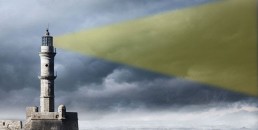In Part 4 of this iUniverse blog series, author John C. Woodcock started to explain how the esteemed psychoanalyst and thinker, Carl Gustav Jung, has influenced his thinking and consequently his writing. Now we let John explain more about Jung and his influence.
“His written record of this journey is now published as The Red Book. Jung’s understanding of what he went through is complex and beyond the scope of this book, but we can touch on two aspects that are relevant here. On the one hand, after Jung emerged from his immersion in the “breakdown”, he returned to the categories of inner and outer and took up the question of how one could have anything to do with the other. For example, his theory of synchronicity is a sustained attempt to find a theoretical connection between inner events, say a dream, and a “coincidental” event in the outer world. On the other hand Jung seemed to accept the breakdown of categories (e. g. spatial and temporal categories that form the structure of modern consciousness) and to change accordingly in his self-definition. He thus became initiated by the experiences themselves into a new reality. This initiation gave Jung the power to form new conceptions appropriate to this reality and thus perceive new aspects of the real world. These new conceptions gave rise to his unique notion of soul as absolute interiority—a conception subsequently fully developed by Wolfgang Giegerich.
Breakdown of Categories
Jung’s complex and contradictory responses to the “breakdown of categories”, have given rise to conflicting theoretical and methodological paths within the Jungian community but may be sympathetically understood as the result of a pioneer’s attempt to face the sheer terror of participating in a breakdown of the very categories that support modern consciousness itself. And, if consciousness itself is undergoing a transformation, then personal breakdowns and world convulsions are highly likely, as our history demonstrates so well. ”
 In Part 6 of this important iUniverse Publishing Blog series, John seeks to articulate his writing form. To learn more about John, his books and his thinking, visit his website. To see all of his books visit the iUniverse Bookstore.
In Part 6 of this important iUniverse Publishing Blog series, John seeks to articulate his writing form. To learn more about John, his books and his thinking, visit his website. To see all of his books visit the iUniverse Bookstore.
Jung, C. G. (2009). The Red Book. (S. Shamdasani, Ed., S. Shamdasani, M. Kyburz, & J. Peck, Trans.) New York: W.W. and Norton & Company.
For a detailed analysis, see Giegerich, W. (2010). “Liber Novis, that is, The New Bible, A First Analysis of C. G. Jung’s Red Book”. Spring 83, 361-413.
See, for example, Giegerich, W. (2012). What is Soul? New Orleans. Spring Journal Inc.
For a detailed analysis of this process see Woodcock, J. C. (2013). Overcoming Solidity: World Crisis and the New Nature. Bloomington. iUniverse.
Related posts:
In this excellent how to create a book series of posts from iUniverse blog guest author, Lisa K. Dru...
iUniverse author Robert Phillips tells us about his 30 years as a police officer in his en...
Donna Ward’s Alias Island has recently been picked up for a TV series. We congratulate Donna, who te...

